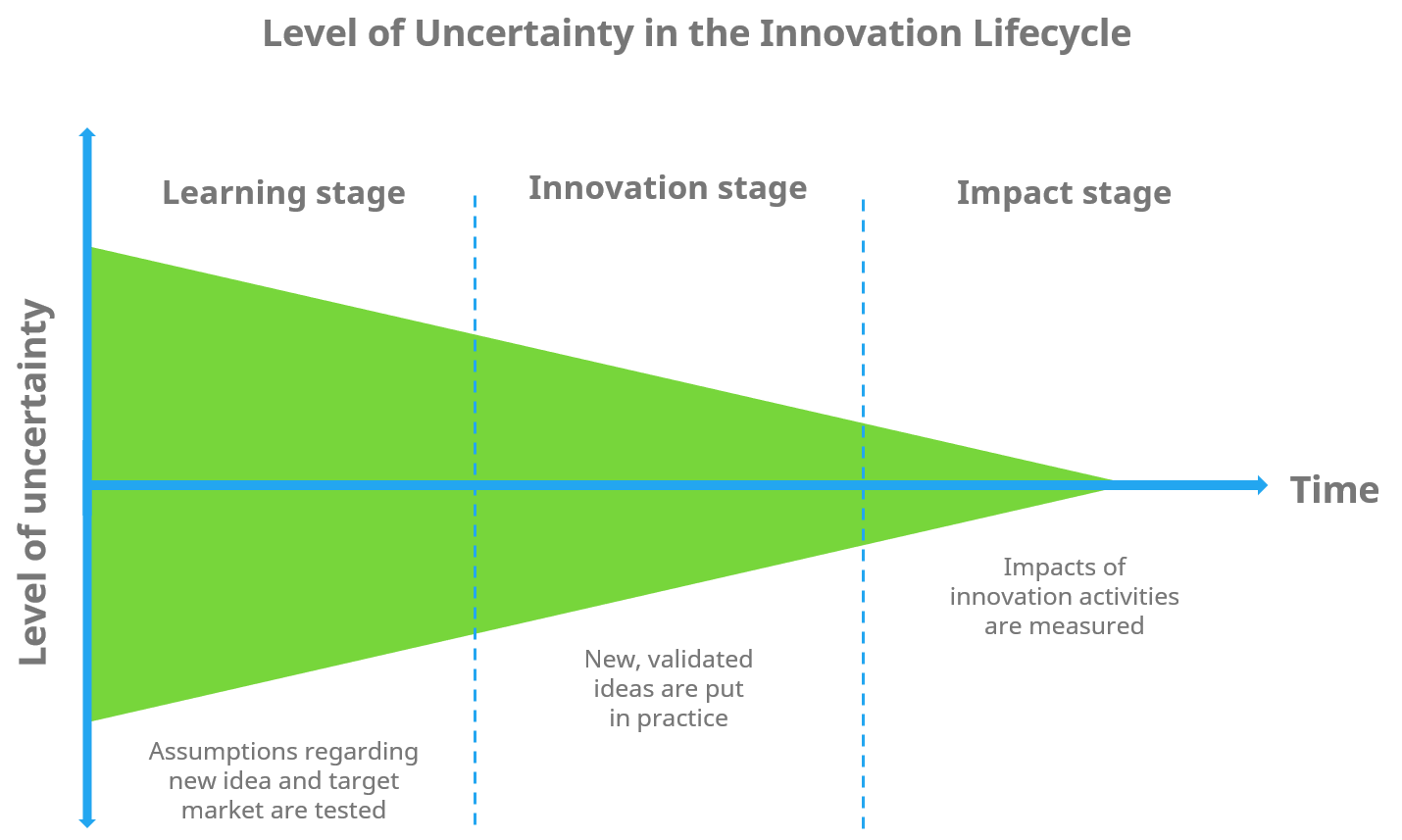Lots of companies have been calculated about creating cultures of innovation. In innovation you can measure progress outcomes effort key learnings pipeline sales customers how many innovation projects are in the hopper and much more.
 Measuring Innovation The Definitive Guide To Innovation Management Kpis
Measuring Innovation The Definitive Guide To Innovation Management Kpis
Especially as the number of ideas and projects in your innovation pipeline grows process metrics help your business put data against the relative speed and efficiency of projects moving through the various stages of that pipeline.

How to measure innovation. If we define innovation as people creating new value and capturing value in a new way there are basically three focal points to measure it. Measuring Innovation the Easy Part. Managers can relatively easily measure the results lagging part of the innovations.
Measuring innovation also involves setting specific goals around ways of fueling innovationthings you do internally to help you hit your targets. Process metrics are essential to measuring innovation at a company because ideally your innovation efforts are always in motionand you need the metrics to match. Value Creation Value creation has to be measured correctly and fairly.
An innovation process exists in any organization. Measuring innovation success is vital in building sustainable business value. Another popular approach is to measure new products and processes generated in the past x years.
The first step to measuring innovation is to agree internally on which activities represent innovation in the organization and select key performance indicators to use as leading indicators. Clarify enterprise strategic business objectives. Funds spent on innovation.
Measuring innovation performance is critical to understand if the investmentthe time all of the activity and all of the capabilities being built to push innovationis actually amounting to anything. The number of innovative initiatives that became successful in a certain amount of time. Past current innovation performance.
Knowing what your business values will allow you to position your innovation initiative for success because in the end you will get what you measure. Define innovation goals to support growth objectives. Productservice innovation can be measured by a single roll-up measure.
They put in place measures that explicitly. It has different measures of success than say a financial strategy. Be careful to categorise ideas that are new to the world versus those more incremental.
Identify required innovation capabilities for the future. Others measure innovation as a process using metrics such as the number of innovation projects in progress. This same approach can be applied to non-profit or government organizations as long as thresholds of performance can be.
The value of the innovation is measurably tied to the outputnot to some dreamy notion of creativity You still have to come up with new ideas but at least you have goals and a way to measure. There are several areas that lead to innovative approaches some of which can be translated into leading indicators for innovation by way of example. Just because you want a specific result it doesnt mean youll get it.
How to Measure Innovation - Element 4. If you think about the eight essentials one of the core principles of the very first essential is you need the aspiration. It is not an easy task but you dont need a degree in analytics to understand how to create a set of metrics that ensures a well-rounded portfolio of measures.
Measurement is a significant factoring in successful innovation. It is important to understand that a clear definition of what constitutes innovation is critical to the success of measurement. Traditional measures of innovation such as RD investment and patents were fine when innovation mostly occurred in large manufacturing firms but are of limited value when much of the action lies in services business models and entrepreneurial start-ups.
How to Measure Innovation Page 2 of 5 A ratio of revenue or net profit from new ideas divided by the average cost of implementation of an idea Aggregate ROI of new ideas implemented. And some track input measures such as the number of ideas generated while still others focus on the innovation portfolio by looking at factors such as the percentage of investments in breakthrough projects versus product line extensions. When it come to innovation it is best to employ a Residual Income calculation rather than a ROI approach.
Common measures of innovation output include new IP created new patented inventions within x years new copyrights new designs trademarks generated etc. It isnt as logical as finance where you either meet the budget or you dont. The specific process for establishing innovation metrics can include the following steps.
Revenue generated by innovations.


